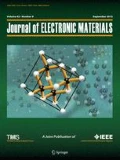Abstract
A triboelectric nanogenerator (TENG) is a sustainable solution for the development of smart battery-less devices. It is clean, pollution-free, and cost-effective. Various studies have investigated the fabrication of TENGs using different materials. Biomaterials have great potential in this area. Hair, a natural biomaterial, is made of keratinized proteins having different chains of amino acids. These amino acids act as an active layer for the TENG. In this investigation, animal hair is used to fabricate an active layer of a TENG. This layer is tested with active layers of different biomaterials including egg shell membrane and cellulose from different sources (Bombax ceiba tree cotton, tissue paper cellulose), synthetic materials including Teflon (polytetrafluoroethylene—PTFE) and zinc oxide (ZnO), and metals including copper (Cu) and aluminium (Al). The TENG generated 200 volts peak-to-peak voltage using dog hairs and a PTFE combination. A series combination of 124 light-emitting diodes was also lighted with this TENG. Finally, a smart device was powered using this combination. This work provides a basis for further research using different biomaterials for TENG fabrication.
Similar content being viewed by others
References
F.R. Fan, Z.Q. Tian, and Z.L. Wang, Nano Energy 1, 328 (2012).
H. Zou, Y. Zhang, L. Guo, P. Wang, X. He, G. Dai, H. Zheng, C. Chen, A.C. Wang, C. Xu, and Z.L. Wang, Nat. Commun. 10, 1 (2019).
S. Wang, L. Lin, and Z. Lin, Nano Energy 11, 436 (2015).
L. Meng, Q. Xu, L.I. Dan, and X. Wang, J. Electron. Mater. 48, 7411 (2019).
S.K. Karan, S. Maiti, O. Kwon, S. Paria, A. Maitra, S.K. Si, Y. Kim, J.K. Kim, and B.B. Khatua, Nano Energy 49, 655 (2018).
M.R. Harkey, Forensic Sci. Int. 63, 9 (1993).
E.N. Jayaweera, K.R. Wijewardhana, T.K. Ekanayaka, A. Shahzad, and J.K. Song, and ACS. Sustain. Chem. Eng. 6, 6321 (2018).
G. P. Tan and J. J. P. Bautista, IEEE Reg. 10 Annu. Int. Conf. Proceedings/TENCON 2018-Octob, 2297 (2019).
S.V. Kshirsagar, B. Singh, and S.P. Fulari, Indian J. Forensic Med. Pathol. 2, 105 (2009).
M. Sharma, M. Sharma, and V.M. Rao, Afr. J. Biochem. Res. 5, 1 (2011).
Y.P. Jeon, J.H. Park, and T.W. Kim, Appl. Surf. Sci. 445, 50 (2018).
S. He, Y. Guo, R. Guo, X. Fu, L. Guan, and H. Liu, J. Electron. Mater. 48, 2886 (2019).
S. Niu, S. Wang, L. Lin, Y. Liu, Y.S. Zhou, Y. Hu, and Z.L. Wang, Energy Environ. Sci. 6, 3576 (2013).
K.S. Kim and H.K. Park, Ski. Res. Technol. 19, 1 (2013).
P. Garidel and H. Schott, BioProcess Tech. 4, 40 (2006).
K.L.A. Chan, S.G. Kazarian, A. Mavraki, and D.R. Williams, Appl. Spectrosc. 59, 149 (2005).
J. Mihály, S. Sterkel, H.M. Ortner, L. Kocsis, L. Hajba, É. Furdyga, and J. Minka, Croat. Chem. Acta 79, 497 (2006).
M. Seol, S. Kim, Y. Cho, K.E. Byun, H. Kim, J. Kim, S.K. Kim, S.W. Kim, H.J. Shin, and S. Park, Adv. Mater. 30, 1 (2018).
H. Fang, Q. Li, W. He, J. Li, Q. Xue, C. Xu, L. Zhang, T. Ren, G. Dong, H.L.W. Chan, J. Dai, and Q. Yan, Nanoscale 7, 17306 (2015).
Author information
Authors and Affiliations
Corresponding authors
Additional information
Publisher's Note
Springer Nature remains neutral with regard to jurisdictional claims in published maps and institutional affiliations.
Electronic supplementary material
Below is the link to the electronic supplementary material.
Supplementary material 1 (MP4 3385 kb)
Supplementary material 2 (MP4 6509 kb)
Supplementary material 3 (MP4 4169 kb)
Rights and permissions
About this article
Cite this article
Singh, M., Sheetal, A., Singh, H. et al. Animal Hair-Based Triboelectric Nanogenerator (TENG): A Substitute for the Positive Polymer Layer in TENG. J. Electron. Mater. 49, 3409–3416 (2020). https://doi.org/10.1007/s11664-020-08031-y
Received:
Accepted:
Published:
Issue Date:
DOI: https://doi.org/10.1007/s11664-020-08031-y




